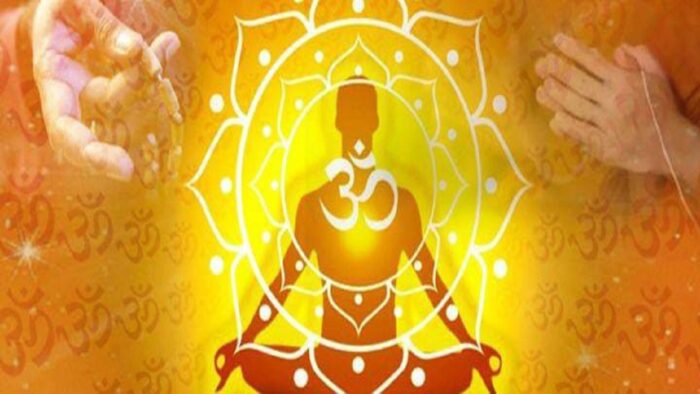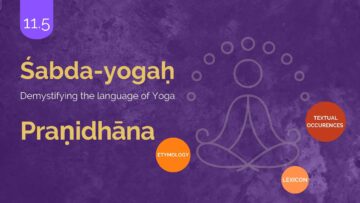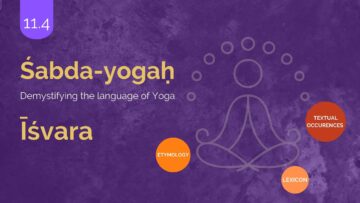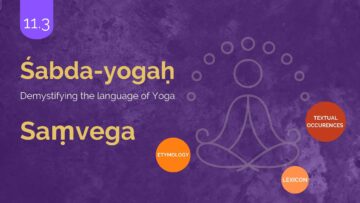Introduction
This write up is based on a Vedic sūkta from the tenth maṇḍala of ṛgveda. It is the 163rd sūkta. The ṛśi of this mantra is Vivṛhākāśyapa. The meter is anuṣṭubh. There are 6 mantras in this sūkta.
“I will remove yakṣma (disease)” – is the sentence that is repeated in all the six mantras of this sūkta. The remover of the disease indicated by the term ‘I’ can be the mantra itself. It can also be the healer who desires to heal an ill person chanting this mantra.The rest of the sūkta details the limbs of the body from which yakṣma is set to be stripped off. According to tradition chanting of this mantra cures while visualizing its meaning – is the prescription for a life free from diseases.
The sūkta
अक्षीभ्यांतेनासिकाभ्यांकर्णभ्यांछुबुकादधि।
यक्ष्मंशीर्षण्यंमस्तिष्काज्जिह्वायाविवृहामिते॥१||
ग्रीवाभ्यस्तउष्णिहाभ्यःकीकसाभ्योऽनूक्यात्।
यक्ष्मंदोषण्यमंसाभ्यांबाहुभ्यांविवृहामिते॥२॥
आन्त्रेभ्यस्तेगुदाभ्यःवनिष्ठोर्हृदयादधि।
यक्ष्मंमतस्नाभ्यांयक्नःप्लाशिभ्योविवृहामिते॥३॥
ऊरुभ्यांतेअष्ठीवद्भ्यांपार्ष्णिभ्यांप्रपदाभ्याम्।
यक्ष्मंश्रोणीभ्यांभासदाद्भंससोविवृहामिते॥४॥
मेहनाद्वनङ्करणात्लेमभ्यस्तेनखेभ्यः।
यक्ष्मंसर्वस्मादात्मनस्तमिदंविवृहामिते॥५॥
अङ्गादङात्लोम्नोलोम्नोजातंपर्वणिपर्वणि।
यक्ष्मंसर्वस्मादात्मनस्तमिदंविवृहामिते॥६॥
akṣībhyāṃtenāsikābhyāṃkarṇabhyāṃchubukādadhi.
yakṣmaṃśīrṣaṇyaṃmastiṣkājjihvāyāvivṛhāmite.. 1..
grīvābhyastauṣṇihābhyaḥkīkasābhyo’nūkyāt.
yakṣmaṃdoṣaṇyamaṃsābhyāṃbāhubhyāṃvivṛhāmite..2..
āntrebhyastegudābhyaḥvaniṣṭhorhṛdayādadhi.
yakṣmaṃmatasnābhyāṃyaknaḥplāśibhyovivṛhāmite..3..
ūrubhyāṃteaṣṭhīvadbhyāṃpārṣṇibhyāṃprapadābhyām.
yakṣmaṃśroṇībhyāṃbhāsadādbhaṃsasovivṛhāmite..4..
mehanādvanaṅkaraṇātlemabhyastenakhebhyaḥ .
yakṣmaṃsarvasmādātmanastamidaṃvivṛhāmite..5..
aṅgādaṅātlomnolomnojātaṃparvaṇiparvaṇi.
yakṣmaṃsarvasmādātmanastamidaṃvivṛhāmite..6..
Meaning- Mantra by Mantra
First mantra – I remove the disease related to head (śīrṣaṇyaṃ ) from your eyes (akṣi), nostrils (nāsikā), ears (karṇa), chin (chubuka), brain ( mastiṣka) and tongue (jihvā).
Second Mantra – I remove the disease related to the shoulders (doṣaṇya) from – the muscles present in the nape of the neck (uṣṇihā), from the veins/nerves in the throat region (grīvā), from the bones (in the region) (kīkasa), from the joints of bones (in the region) (anūkya) and from the shoulder blade/upper part of the hands (amasa) and from the shoulders/lower part of the hands (bāhu)
Third Mantra – I remove disease from the place of a nādipurītat or entrails/ the place where food and liquid that is consumed is deposited (āntra), from the nādis through which samānavāyu carries the nourishment attained through the digested food to the various parts of the body (gudā), from the large intestine (vaniṣṭhu), from the heart (hṛdaya), from the kidneys (matasnā), from the liver (yakna) and from other fleshy parts like lungs and spleen (plāśi).
Fourth Mantra – I remove the disease from the thighs (ūru), from the knees (aṣṭhīvat), from the hind part of the feet/heels (pārṣṇi), the front part of the feet/the region around big toes(prapada) from the loins/hips/buttocks (śroṇi), shining anus (bhāsadādbhamsas).
Fifth Mantra – I remove the disease from your – penis (mehana) – the limb through which watery waste of the body is discharged (vanaṅkaraṇa), the hairs (loman) and the nails (nakha) and all parts your body (sarvasmādātmaḥ).
Sixth Mantra – I remove disease that has manifested, from each of the limb (aṅga), hair (loman) and joints (parvan) and all parts your body.
Observations:
A few observations on the Mantra are given below –
- This hymn from ṛgveda which is a few millennia old even by most conservative estimates, details most internal parts of the body – a clear description in a head to toe sequence. This shows that Vedic culture was not other-worldly and did not neglect the health and well-being of this body.
- Note the usage ग्रीवाभ्यः (mantra 2). Literal translation would mean ‘necks’. We humans have only one neck. Then how can disease be removed from many necks? The commentator Sāyanācārya beautifully explains – गलगताभ्यःधमनीभ्यः – galagatābhyaḥdhamanībhyaḥ – remove disease from the nerves/veins from the throat region (which are innumerable, and hence deserves plural). Usage of the plural subtly indicates the nerves/veins of the region. Only the discerning mind (like Sāyanācārya) can decipher this. Crisp and subtle usage of language (Similar is the usage of the word gudā in the 3rd mantra)
- The near and dear of a person with illness, can chant this mantra visualizing the meaning. In the time of uncertainty and stress due to illness, chanting of the mantra will bring in a sense of relief through the positive vibrations of the mantra for both the person in pain and for the near and dear – leading to all round subjective well-being.
This therapeutic set of mantras with many such benefits embedded in it is inviting us to chant and reap the benefits. This is the millennia old prescription of ṚśiVivṛhākāśyapa.
Reference:
Ṛgveda-saṃhitā, śrīmat-sāyaṇācārya-viracita-bhāṣya-sametā, caturtha-bhāgaḥ, vaidika-saṃśodhana-maṇḍalam, Puṇe, 1946. Accessed from: https://archive.org/details/RgVedaWithSayanasCommentaryPart4/page/n1/mode/2up
Feature Image Credit: youtube.com
Disclaimer: The opinions expressed in this article belong to the author. Indic Today is neither responsible nor liable for the accuracy, completeness, suitability, or validity of any information in the article.











